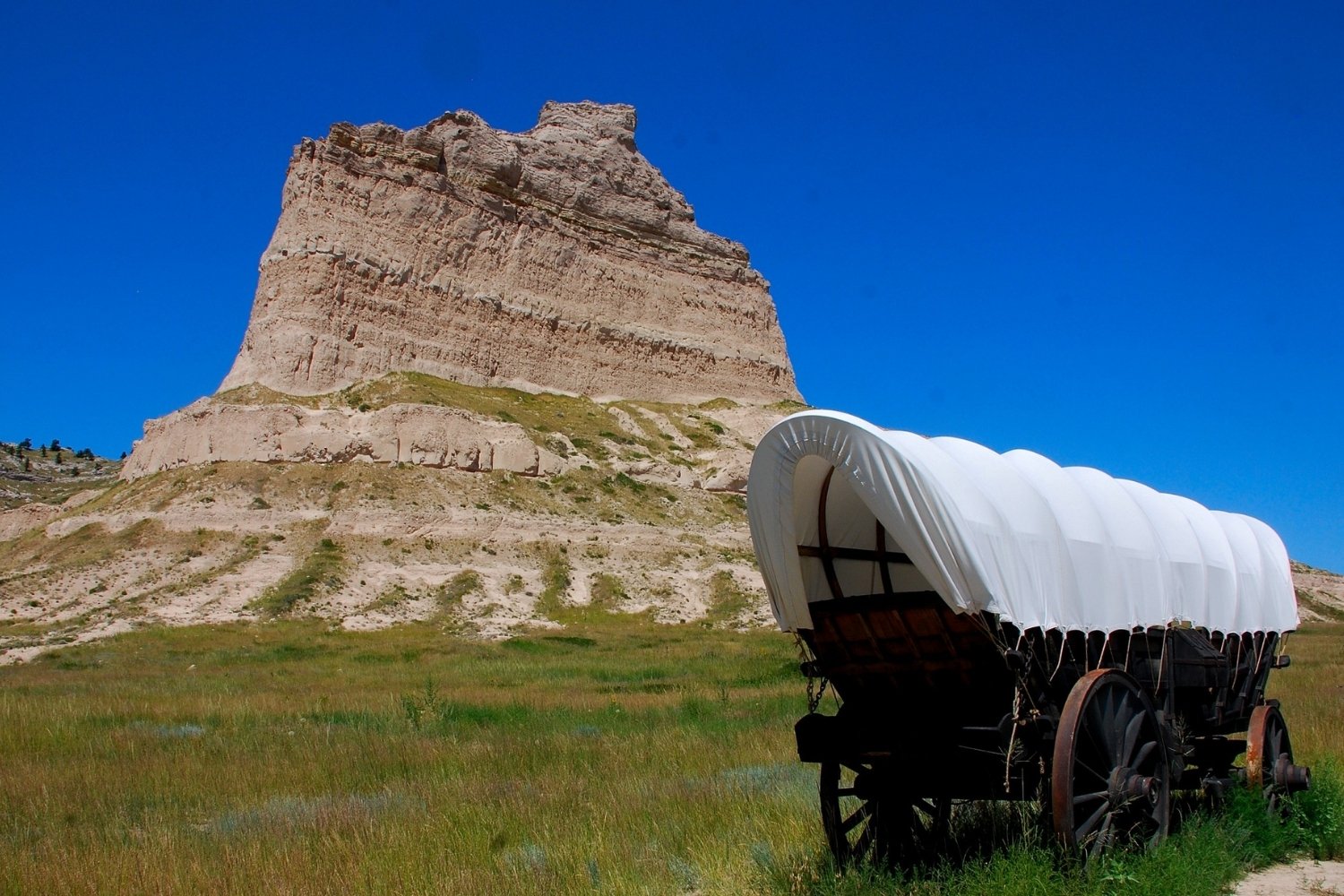Hidden Pioneer Crossings Of Nebraska’s Oregon Trail

Have you ever wondered about the hidden gems along Nebraska's Oregon Trail? This historic route, once bustling with pioneers, holds secrets waiting to be uncovered. From scenic landscapes to forgotten landmarks, Nebraska offers a unique glimpse into the past. Imagine walking where thousands once tread, feeling the spirit of adventure in every step. Whether you're a history buff or just love exploring new places, the Oregon Trail in Nebraska promises a journey through time. Ready to discover what lies beyond the well-trodden paths? Let's dive into the hidden pioneer crossings that make this trail truly special.
Hidden Pioneer Crossings of Nebraska's Oregon Trail
Nebraska's Oregon Trail is a historic route that played a crucial role in westward expansion. Many travelers crossed this path, leaving behind a legacy of hidden gems. Let's uncover some lesser-known crossings along this iconic trail.
Chimney Rock
Chimney Rock stands as a natural landmark that guided pioneers. Its towering spire could be seen from miles away, offering a sense of direction and hope.
- Chimney Rock National Historic Site: This site offers a visitor center with exhibits detailing the history of the Oregon Trail. The rock itself is a must-see, providing a glimpse into the past.
- Chimney Rock Cemetery: Nearby, this cemetery holds the graves of some early settlers. It’s a somber reminder of the hardships faced during the journey.
Scotts Bluff
Scotts Bluff served as another significant marker for those traveling west. Its towering cliffs provided a natural barrier and a point of reference.
- Scotts Bluff National Monument: This monument offers hiking trails and a museum. Visitors can learn about the trail's history and enjoy panoramic views from the summit.
- Mitchell Pass: Located within Scotts Bluff, this pass was a crucial crossing point. It allowed wagons to navigate through the bluffs, making it a vital part of the trail.
Courthouse and Jail Rocks
These twin rock formations were another key landmark. They resembled courthouse buildings, hence their names, and were easily recognizable to travelers.
- Courthouse and Jail Rocks Historical Marker: This marker provides information about the significance of these formations. It’s a great spot for photos and a quick history lesson.
- Nearby Trails: Several trails around these rocks offer hiking opportunities. They provide a chance to explore the area and imagine what it was like for the pioneers.
Ash Hollow
Ash Hollow was a welcome respite for weary travelers. Its lush surroundings and fresh water made it an ideal stopping point.
- Ash Hollow State Historical Park: This park features a visitor center with exhibits on pioneer life. The natural beauty of the area makes it a perfect spot for a picnic.
- Windlass Hill: This steep hill was a challenging descent for wagons. Today, visitors can hike the hill and see the deep ruts left by wagon wheels.
Fort Kearny
Fort Kearny was a vital supply stop along the Oregon Trail. It provided protection and resources for those making the arduous journey.
- Fort Kearny State Historical Park: This park includes a reconstructed fort and a museum. It offers a glimpse into the daily life of soldiers and settlers.
- Buffalo Bill Ranch State Historical Park: Located nearby, this park was once the home of Buffalo Bill. It’s a fascinating place to learn about the Wild West and its colorful characters.
Rock Creek Station
Rock Creek Station was a bustling hub of activity. It served as a stagecoach stop, a Pony Express station, and a trading post.
- Rock Creek Station State Historical Park: This park features reconstructed buildings and interpretive trails. Visitors can learn about the station’s history and its role in westward expansion.
- Pony Express Barn: The barn at Rock Creek Station is a highlight. It’s a reminder of the daring riders who carried mail across the country.
Register Cliff
Register Cliff was a place where travelers left their mark. Many pioneers carved their names into the soft rock, creating a lasting record of their journey.
- Register Cliff Historic Site: This site preserves the carvings left by pioneers. It’s a poignant reminder of the individuals who braved the trail.
- Nearby Campsites: Several campsites near Register Cliff offer a chance to experience the area as the pioneers did. It’s a great way to connect with history and nature.
Discovering Nebraska's Hidden Pioneer Crossings
Nebraska's Oregon Trail crossings offer a unique glimpse into the past. These hidden gems reveal stories of determination and adventure. Visiting these sites, like Ash Hollow and Windlass Hill, brings history to life. You can almost hear the creak of wagon wheels and the murmur of pioneers.
Exploring these crossings isn't just about history. It's about connecting with the land and understanding the challenges faced by early travelers. The landscapes remain largely untouched, providing a window into the 19th-century experience.
Whether you're a history buff or just love a good adventure, these crossings are worth the trip. They offer a chance to step back in time and appreciate the journey of those who came before us. So pack your bags, hit the trail, and uncover the hidden stories of Nebraska's Oregon Trail crossings.

